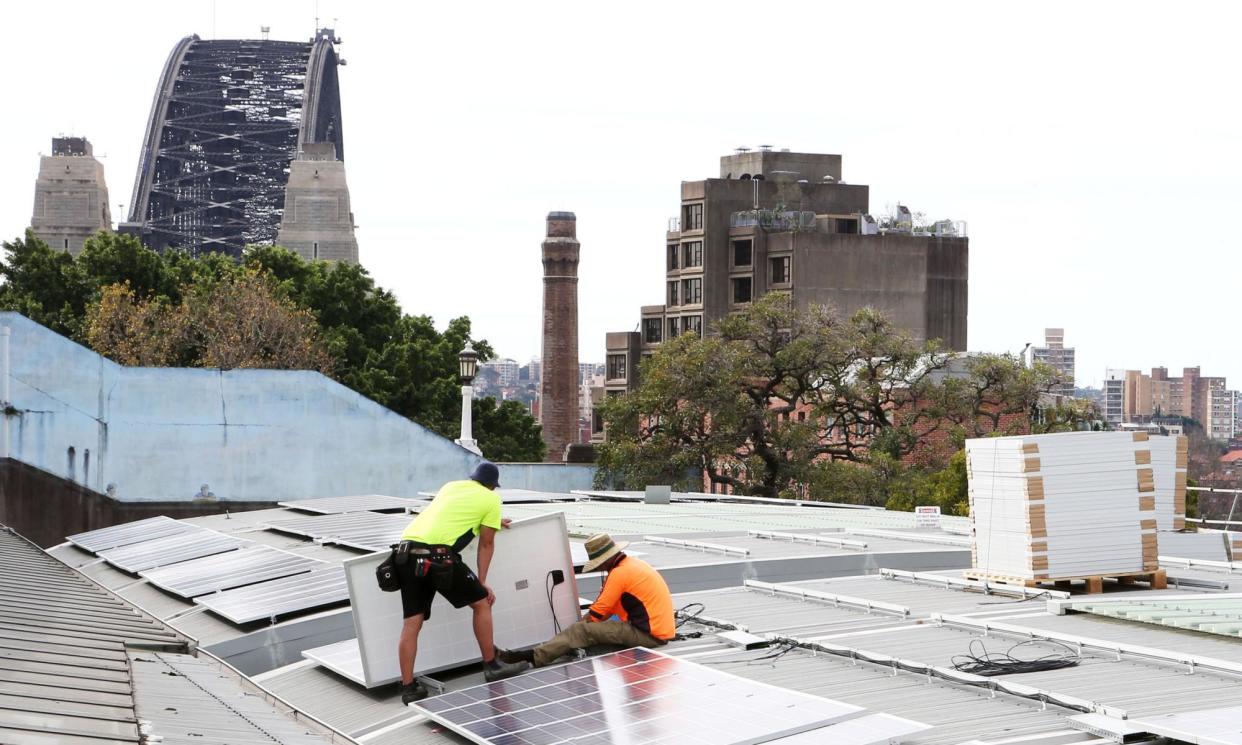Australian homes three times more likely to have solar panels than a pool as energy prices surge

Quarterly installations of new solar panels reached a record at the end of 2023, with Australian households more than three times as likely to have a photovoltaic system as a back yard swimming pool.
Households and businesses added 921 megawatts of solar photovoltaic capacity in the December quarter, according to SunWiz, an industry data group.
The tally took new rooftop solar capacity to about 3.17GW for all of last year, up 14% on 2022 and trailing only 2021’s record for annual installations of just over 3.23GW when installers were making up for Covid-related disruption.
The final quarter or 2023 also included Australia’s two busier months for solar installations, with November clocking up 329MW and December 321MW. It also included the biggest single day when more than 26MW were added on 21 December.
Warwick Johnston, SunWiz’s managing director, said the industry was poised to “start off strongly in 2024” as consumers raced to shield themselves from high electricity prices. In addition, a “global oversupply has driven down the price or new panels”, he said.
Related: ‘Go hard and go big’: How Australia got solar panels onto one in every three houses
Small-scale solar installations – covering systems or 100 kilowatts or narrower – have been the fastest-growing part of the renewable energy sector for some time. By contrast, large-scale solar and wind farms were not being built at the pace needed to replace ageing coal-fired power stations, the Australian Energy Market Operator (Aemo) warned last month in a major report.
More than 3m Australian homes had solar panels on their roofs, with annual growth of 12% over the last five years, Aemo said. That capacity meant rooftop solar was now capable of meeting almost half of underlying electricity demand across the national energy market in the middle of a sunny day.
At the end of last year, rooftop solar was at times meeting all of South Australia’s power demand and two-thirds of Victoria’s, Aemo said.
New operational demand records set in VIC (1,564 MW) & SA (-26 MW) on 31 December 2023, with #rooftopsolar contributing two-thirds of VIC's & all of SA's total energy needs. On the day, wholesale electricity prices averaged -$66.54 & -$73.02 ($/MWh) in SA & VIC, respectively. pic.twitter.com/0JUorY4wG4
— AEMO (@AEMO_Energy) January 2, 2024
Johnston said part of the increase in solar PV capacity was coming from households increasing the size of the units they bought. The average system reached almost 10.5kW, SunWiz’s data showed.
The fall in cost of new panels, combined with increases in power prices of a quarter or more in the last year, meant the payback period for new systems had now dropped below five years for residential users. For commercial users, panels will pay off their costs in about 5.3 years as of the end or 2023, SunWiz said.
While final figures are still to be tallied, households probably added about 60,000 home batteries in 2023, or a fifth more than in the previous year, Johnston said.
Consumers were looking to soak up the excess solar energy their rooftop systems were generating during the middle of the day, he said, noting that states such as Victoria were paying just three cents per kilowatt-hour fed back into the grid.


